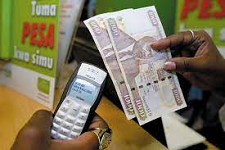By Mosa Mokone – There has been a shift from desktop to mobile as Africa embraces the m-commerce shopping experience. Smollan, retail specialist, unpacks what m-commerce means to the African retail market and what retailers need to do to stay relevant and benefit from this movement.
In these quick-connection times, Africa’s mobile economy is on the move as shoppers dial in to multi-functionality, convenience, affordability, super apps, digital wallets, instant accessibility, and services that changes lives as m-commerce platforms a new era.
The transactional power shifting from desktops to smartphones and tablets allows mobile commerce to become part of an on-the-move lifestyle for consumers and gives retailers real time access to user information allowing them to reach their audience anytime, anywhere.
A recent European Investment Bank (EIB) article paints the picture pointing out how it took 128 years to bring landline phones to one billion people. Then, in 20 years six billion people bought mobile phones – including those in regions previously cut off from any means of communication. Swinging the pendulum that doesn’t just serve the purpose of keeping in touch, creates a completely new financial landscape.
Global research documents the rise of m-commerce, with mobile bringing in 46% of the sector’s revenue, compared to 25% from desktop and 9% from tablets and the global m-commerce market predicted to rise at a considerable rate between 2021 and 2026 [Market Watch, Dec 2021]. With the release of new phone technology, including 5G, this mobile-obsessed market is getting to grips with the feeding frenzy.
Shopifyplus shared some interesting #whattheactual survey results in 2021 – highlighting the fact that the average person taps their mobile phone once every 10 minutes; one in five people would rather go without shoes for a week than take a break from their phone, and people reporting withdrawal symptoms – including increased blood pressure and heart rate – when separated from their phones.
Closer to home as we turn the corner after a smothering past two years, it’s time to tell a different story of Africa, as expansion and innovation is put on the pedestal it deserves affording new and existing players to improve market penetration across the retailing African landscape.
TechCrunch published a 2021 GSMA Intelligence Report observing that across sub-Saharan Africa, 303 million people, about 28% of the population, are connected to the mobile internet and that this number is expected to rise to 40% in the next three years. The proof is in the pudding, as Jumia reported 30% growth in the value of goods sold on its platform during Black Friday last year.
Writing for BizCommunity, Christele Chokossa a research consultant at Euromonitor observes that the influx of entry-level smartphones and lowering data bundle prices has created room for a mobile app culture in sub-Saharan Africa, and subsequently m-commerce services.
The trend also benefits from the diversification of leading telecommunication companies, with mobile money making its way from physical stores to online platforms backed by over 500 million users across the continent.
“The adoption of m-commerce services will be accelerated by the modernisation of payment systems as it facilities transactions with the overwhelming number of unbanked populations, overcoming payment and safety challenges. A noticeable example can be taken for the launch of the e-naira in Nigeria in 2021, and the implementation of the Rapid Payment Programme (RPP) in South Africa. Both offer an efficient digital solution across income groups,” said Christele.
The question is, how can African retailers successfully penetrate the m-commerce economy to reap the rewards and grow their business? A research article by Richard Pankomera and Darelle van Greunen from the Nelson Mandela Metropolitan University (PE), report that besides technical, social, and financial barriers in Africa that m-commerce can bring production, transformation, and incremental benefits to the user.
The study revealed that key adoption factors must be top of mind as retailers both formally and informally, find their m-commerce fit in Africa. From a tech aspect to awareness campaigns, ease of use, affordability, perceived security and trust, access to financial services, regulatory support and the availability of mobile money and application services.
Retailers who want to ride this wave for a sustainable future need to understand that in Africa a one-size fits all solution cannot work with EIB suggesting that three key areas must be mindfully addressed. Positioning content by taking local cultures and languages into account. Affordability by pricing services in line with local conditions and accessibility and reaching all consumers regardless of their device or internet access.
While Africa faces some challenges around using m-commerce efficiently, iTouch online reporting on South African mobilisation, true for the rest of Africa suggests there are two practices to remember to improve mobile sales and uplift brands, namely, the fewer clicks the better and a consistent brand experience.
Retailers and brand owners need solid, well-planned, and well-executed e-commerce offerings. Websites have to be easy to navigate with products that are appropriately categorised and priced. Consumers should only have to click three times to find exactly what they are looking for.
Because of the omnichannel approach retailers and brand owners must create a consistent brand experience for consumers – that means that, whether your customers are on Twitter, on a specific App, Facebook or Instagram, the spirit of the customer experience should be the same.
M-commerce is not the next big thing – it’s already in full swing. Retailers need to stay relevant and pivot or risk being swallowed

